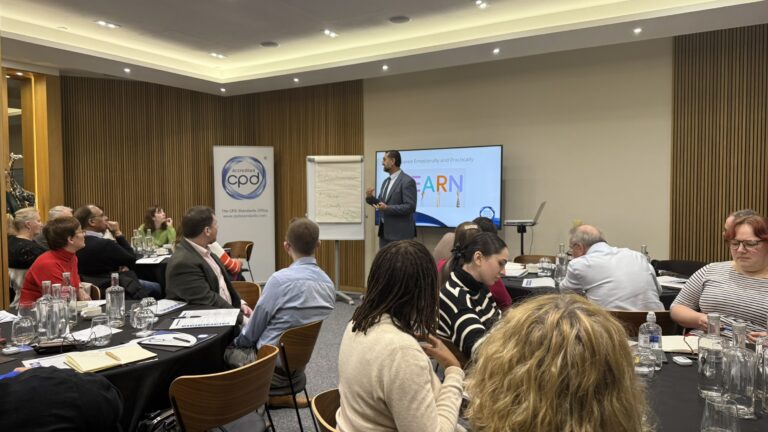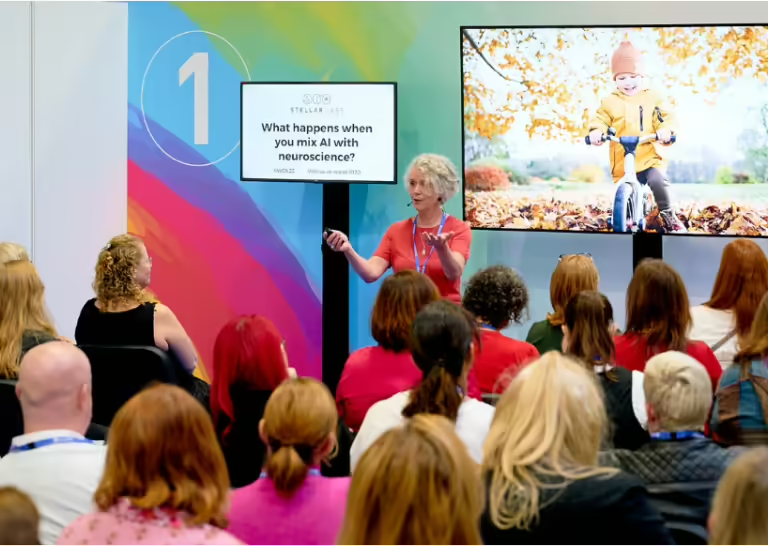Hello, and welcome to this week’s Friday Fresh!
Today, we’re exploring Constructivism Theory – an approach that can transform your learning environment and supercharge engagement.
If you’re in the business of educating or training, understanding how learners build knowledge can help you design more effective, interactive courses. Let’s dive in and see how Constructivism can enhance your teaching and your learners’ experience.
What is Constructivism Theory?
Constructivism is a learning theory that suggests learners construct their own understanding and knowledge of the world through experiences and reflection. Instead of passively receiving information, learners actively engage with content, making meaning by connecting new ideas to their existing knowledge.
The key concept here? Learning is an active, personal process.
As a trainer or course designer, this theory encourages you to move away from the traditional “sage on the stage” approach and towards being a “guide on the side,” helping learners explore, inquire, and create their own understanding.

How Can Constructivism Enhance Learning?
Constructivism places the learner at the heart of the learning process, empowering them to take ownership of their education.
Let’s look at how this theory can enhance the design and delivery of your courses:
1. Active Participation over Passive Consumption
Rather than learners passively consuming information, Constructivism encourages active engagement. Invite your learners to participate, explore, and problem-solve. This hands-on involvement leads to deeper understanding and long-term retention.
Tip: Design tasks that allow learners to apply the material in real-world contexts, such as through case studies, projects, or problem-solving exercises.
2. Build on Prior Knowledge
Constructivism highlights the importance of building on what learners already know. By connecting new ideas to their existing knowledge and experiences, learners can integrate new information more effectively.
Insight: Always begin a lesson by tapping into learners’ prior knowledge. This could be done through a quick review, a question, or an interactive exercise that asks learners to share what they already know about the topic.

3. Collaboration and Social Learning
According to Constructivism, learning is often a social process. Engaging with peers allows learners to test their ideas, gain different perspectives, and co-construct knowledge.
Tip: Incorporate group discussions, peer-to-peer teaching, or collaborative projects into your courses. Learning together helps learners challenge their own thinking and explore new viewpoints, leading to richer understanding.
4. Critical Thinking and Problem Solving
Constructivist teaching encourages learners to think critically and solve problems without tutor support. This shifts the focus from memorising facts to developing reasoning skills and understanding concepts at a deeper level.
Tip: Ask open-ended questions and real-life scenarios to your learners, encouraging them to explore various solutions and approaches. Let them experiment, make mistakes, and learn from the process.

5. Make Learning Personal
Constructivism recognises that each learner brings their own unique experiences to the table. Personalised learning allows students to engage with material in ways that resonate with them, fostering motivation and deeper engagement.
Insight: Allow learners some choice in how they approach assignments or activities. Providing autonomy in learning pathways (whether through project topics, problem-solving methods, or even deadlines) can significantly increase learner ownership and enthusiasm.
6. Provide Opportunities for Reflection
Reflection is a critical component of Constructivism. When learners reflect on what they’ve done, they reinforce their understanding and make meaningful connections between new concepts and their personal experiences.
Tip: Build in time for reflection at the end of each learning session. This could take the form of journaling, group discussions, or even a short debrief where learners summarise their key takeaways.
Practical Steps to Apply Constructivism in Course Design
Use Real-World Examples: Ground your lessons in real-world examples that learners can relate to. This makes the material feel relevant and helps learners connect the content to their own lives.
Create Interactive Experiences: Move beyond lectures. Incorporate interactive elements such as role-playing, case studies, and simulations that allow learners to experience the material firsthand.
Scaffold Learning: Break down complex topics into manageable steps. Guide learners from basic understanding to more complex analysis and application, providing support along the way.
Encourage Inquiry-Based Learning: Allow learners to ask questions, conduct research, and explore solutions rather than simply presenting them with facts. This promotes critical thinking and mirrors real-life problem-solving.
Final Thoughts
Constructivism is a practical approach to designing learning experiences that are dynamic, learner-centred, and deeply effective. By encouraging learners to actively participate, connect new knowledge to their prior understanding, collaborate with peers, and reflect on their learning journey, you empower them to truly own their education.
This week, take a moment to assess how you can incorporate more constructivist strategies into your courses. You don’t need to fully re-design your courses. Testing different elements will show you which aspects of the constructivism theory best fit your topic and audience.







